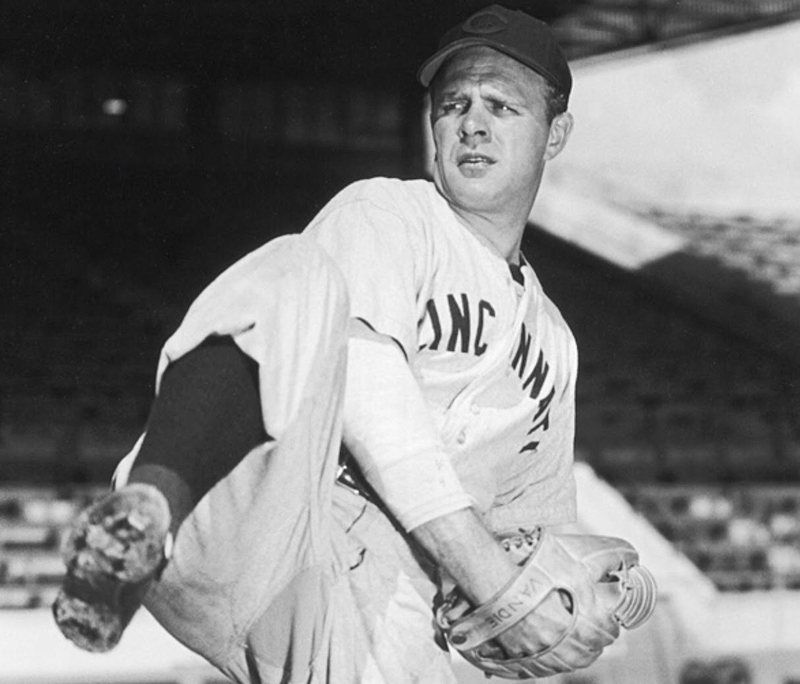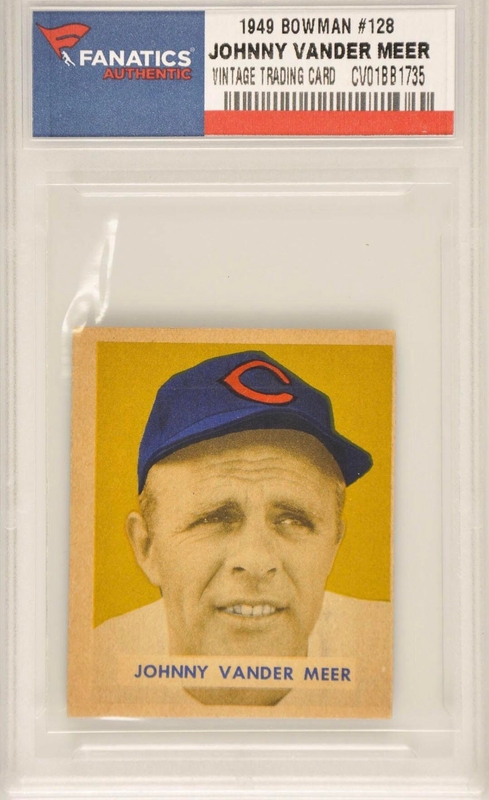Chances are you've probably never heard of Johnny Vander Meer. Or that if you have, you're not quite entirely sure just why you're familiar with the name. After all, he's not a Hall of Famer, he actually lost more games than he won in his 12-year big league career, and he never won any kind of season awards (Cy Young, MYP). What Johnny Vander Meer did do during just his second season in 1938, is one of the most incredible feats, if not the most incredible feat, every accomplished in baseball history, period.
Before we get into the story of Vander Meer's special season in 1938, the young left-handed pitcher from Prospect Park, New Jersey, got his professional baseball career off to a rather inauspicious start. After bouncing around the New York-Pennsylvania League, he played for the Dayton Ducks, and ultimately found his way to the Durham Bulls, the Minor League affiliate of the Cincinnati Reds. It was there, at Durham where Bulls' manager Johnny Gooch was credited with fixing Vander Meer's wild control issues, and during the 1936 campaign, he posted a record of 19-6 for the Bulls.
He made his major league debut the following season at the age of 22, posting a record of 3-4 early in the season before being sent down to the Syracuse Chiefs, where he pitched the majority of the remainder of the season. The following season, Vander Meer was given a full opportunity to display his pitching talents after spending only a very brief stint with the club in the spring and September of the 1937 season.

On June 11th, 1938, Vander Meer took the mound to face the Boston Braves, and delivered his best pitching performance to date, when held them hit-less for his first career no-hitter. The feat helped to strengthen Vander Meer's All-Star case after what was an outstanding start to the season during just his second year.
Then, the 23-year old took the mound four days later for his next start in Brooklyn. The night would be remembered in baseball history for two reasons - first, June 15th, 1938 marked the first night-game ever held at Ebbets Field, and second, Vander Meer pitched even better against the Dodgers in his encore start to his first no-hitter by no-hitting Brooklyn under the lights at their home ball park. It was the first time and quite frankly, most likely the last time that a pitcher threw back-to-back no hitters in consecutive starts.
It's a feat that has only been approached once - by a Cincinnati Reds teammate, Ewell Blackwell in 1947 when he no-hit the Braves and then held the Dodgers with no hits in his next start for the first 8 innings, only to surrender 2 hits in the 9th. It simply has to be one of the rarest and most difficult feats to every be accomplished in any sport when taking into account the vast amount of games that have been played, and how difficult it is to throw one no hitter in general, let alone two in a career. Then to throw two in back-to-back starts, it is truly one of the most unique and difficult feats to ever be accomplished.
Vander Meer went on to start the All-Star game for the National League that season, pitching 3 scoreless innings, to help lead the NL to a 4-1 upset victory over the AL. He went on to finish his 1938 breakout campaign with a record of 15-10 with a 3.12 ERA and 125 strikeouts.
He struggled in 1939 despite being named to his second consecutive All-Star team and finished the season just 5-9 with a 4.67 ERA with 102 strikeouts and 95 walks. He battled through illness and injury all season long and then began to experience control problems once again during spring training of the 1940 season. The Reds sent him back down to the minors and he returned to post a 3-1 record for the season - all coming in September.
After teetering between lights out All-Star caliber level pitching, and extreme control problems over his first couple of seasons in the big leagues, it all came together for Vander Meer in 1941. Despite only pitching in September of the 1940 campaign, Vander Meer was on the roster for the World Series and made only one appearance - surrendering no runs over three scoreless innings - but it was good enough to get him a World Series championship as the Reds defeated the Detroit Tigers in 7 games.
While he didn't make a huge impact during the 1940 World Series, if it wasn't for Vander Meer's impact in September of that season, the Reds may not have won the pennant at all. During a 12-inning outing against Philadelphia on September 18, that clinched the pennant for the Reds, Vander Meer went on to be the hero in the 13th inning when he hit a double, advanced to third on a sac fly, and then scored the winning run on a squeeze bunt.
While Vander Meer was getting his control back, and helping the Reds capture the 1940 title, he blossomed into the his full potential. 1941 started a three-year run of dominance from the left-hander as he led the NL in strikeouts all three seasons, posting totals of 202 k's in 1941, 186 in 1942, and 174 in 1943. He was once-again an All-Star in 42' & 43' and posted an ERA of just 2.82 in 1941 and 2.43 in 1942. Despite leading the league in strikeouts and being named to his fourth All-Star team in 1943, the control problems once again came back to plague Vander Meer as the season wore on and he also finished as the league leader in walks with 162.
Like many professional baseball players during the mid-1940s, Vander Meer did not play for two seasons in the prime of his career as he joined the military and pitched for the Navy's baseball team. He was discharged after two years, and although he claimed that his time in the Navy helped him become a more "controlled" pitcher, he went on to post 124 walks to just 120 strikeouts during the 1948 season despite winning 17 games that year. He pitched two more seasons, and ultimately his control problems made one final appearance late in his career as he finished both of those seasons with more walks than strikeouts. He made one start for Cleveland in the 1951 campaign at the age of 36, and never appeared in the majors again.

Interestingly enough, Vander Meer continued to pitch in the minor leagues for another 5 years until the age of 40, and in 1952, 14 years after pitching his consecutive no-hitters, now at the age of 37, pitched a no-hitter for the Tulsa Oilers against the Beaumont Roughnecks in the Texas League.
Vander Meer finished his career as a four-time All-Star, and was the Reds all-time franchise leader in strikeouts upon his retirement. He complied a record of 119-121 with 1,294 strikeouts, leading the league 3 consecutive seasons, and finished with a 3.44 career-ERA. His back-to-back no hitters in just his second season in 1938, is a feat that most certainly will never be duplicated, and for a brief period in time, no one pitched as good as the young left-hander did for the Reds. And for an even briefer moment in time, no one has and most likely ever will, pitch as good as Johnny Vander Meer did in Boston and Brooklyn during a span of 4 days in mid-June of 1938. His story is one of constant battling for a pitcher who not only battled against opposing batters, but his own control problems, and ultimately, how he came out on top and accomplished something that had never been done - and most likely won't ever be matched again.
Comments